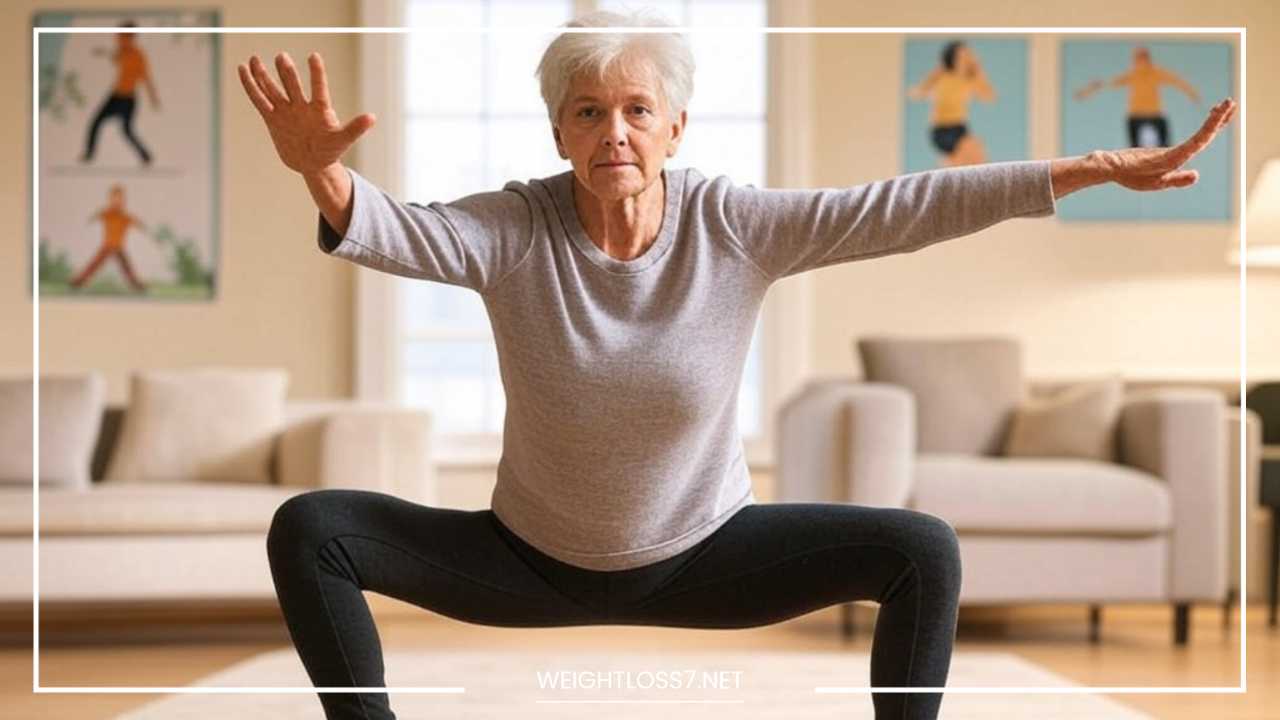How Balance and Strength Exercises Can Help Prevent Falls

Balance and Strength Exercises
How Balance and Strength Exercises Can Help Prevent Falls
Falls are a significant and growing health concern, particularly for older adults. In fact, one in four adults over the age of 65 falls each year, making falls the leading cause of both injuries and deaths from unintentional injuries among this age group.
With aging comes a natural decline in balance, strength, and coordination, all of which increase the risk of falling. However, it’s important to understand that falls are not an inevitable part of aging.
There are effective strategies to reduce fall risk, and one of the most impactful is engaging in balance and strength exercises.
These exercises improve key physical abilities, reduce the likelihood of falls, and promote a higher quality of life.
In this article, we will explore the profound benefits of balance and strength exercises for fall prevention, provide an overview of specific exercises that target balance and strength, discuss how often you should engage in these exercises, and offer additional tips for reducing the risk of falls.
Understanding the Impact of Falls on Health
Falls can lead to a wide range of injuries, some of which are serious and life-altering. The consequences of a fall can vary from minor bruises or sprains to more severe injuries, such as hip fractures, head trauma, and broken bones.
Even when physical injuries are not present, the psychological impact of falling can be significant. Many individuals who have fallen develop a fear of falling, which may lead to a decrease in physical activity.
This reduction in activity can, ironically, make the problem worse, as it weakens muscles and reduces balance, increasing the risk of future falls.
Falls are not just a health issue—they are also a financial burden. In the United States alone, the annual cost of fall-related injuries among older adults exceeds $50 billion, including hospital bills, rehabilitation, and long-term care.
With the aging population continuing to grow, fall prevention has become a major public health priority.
The Role of Balance and Strength in Fall Prevention
As people age, muscle strength, flexibility, and balance naturally decline, which makes it harder to perform everyday tasks and maintain stability when walking or standing.
Balance exercises help improve coordination, stability, and posture, while strength exercises help build and maintain muscle mass.
Together, these two types of exercise can work synergistically to reduce the risk of falling by improving overall body mechanics and physical resilience.
Balance exercises specifically target the body’s ability to maintain equilibrium, preventing falls by improving how the body responds to changes in movement or environmental conditions.
Strength exercises, on the other hand, focus on building muscle strength in key areas such as the legs, core, and upper body.
Strong muscles help maintain better posture, support the body during movement, and enable a quicker recovery when balance is compromised.
The Benefits of Balance and Strength Exercises
Engaging in regular balance and strength exercises offers a wide range of physical, psychological, and emotional benefits:
1. Improved Balance and Coordination
Balance exercises strengthen the muscles responsible for maintaining stability and improve the body’s coordination. For older adults, poor balance is a major risk factor for falls.
Even small improvements in balance can significantly reduce the likelihood of falling. Exercises such as standing on one leg or walking heel-to-toe challenge the body’s ability to stabilize itself and help retrain the brain to react more effectively to shifts in position.
2. Increased Muscle Strength
One of the most critical benefits of strength exercises is the improvement in muscle mass and strength, particularly in the legs and core.
Stronger muscles allow for greater control over body movements, reduce fatigue, and help maintain good posture.
As people age, muscle mass declines, a condition known as sarcopenia. Regular strength training can slow or even reverse this process, helping older adults maintain independence and improve functional mobility.
3. Reduced Fall Risk
The combination of improved balance and increased muscle strength creates a powerful defense against falls.
Strengthened muscles can help catch a person if they begin to lose balance, and better coordination allows for faster adjustments to any instability.
By targeting both physical and neurological aspects of movement, balance and strength exercises can lower the risk of falls in everyday activities like walking, climbing stairs, or even standing up from a chair.
4. Enhanced Functional Ability
Balance and strength exercises not only prevent falls, but they also improve functional ability in daily life.
Simple tasks such as sitting down, standing up, walking, and carrying groceries become easier when your muscles are strong and your balance is stable.
These functional improvements help maintain independence, which is a key aspect of aging in place.
5. Increased Confidence and Independence
Perhaps one of the most empowering benefits of balance and strength exercises is the improvement in confidence.
When individuals become stronger and more balanced, they feel more secure in their ability to navigate the world around them.
This increased confidence can lead to greater independence—enabling individuals to engage in activities they may have avoided due to fear of falling, such as going out for a walk, traveling, or performing household tasks.
6. Prevention of Chronic Health Conditions
In addition to reducing fall risk, balance and strength exercises can help prevent or manage other chronic health conditions such as arthritis, osteoporosis, diabetes, and cardiovascular disease.
By improving circulation, flexibility, and muscle tone, these exercises contribute to overall physical health and well-being.
Types of Balance and Strength Exercises
There are a variety of exercises that can help improve balance and strength. Incorporating a mix of both types of exercises will ensure comprehensive benefits. Here are some examples:
Balance Exercises
- Tai Chi
- Tai Chi is an ancient Chinese practice that combines slow, flowing movements with deep breathing and meditation. Studies have shown that Tai Chi improves balance, flexibility, strength, and mind-body coordination, all of which reduce the risk of falls. It is particularly beneficial for older adults due to its low-impact nature.
- Yoga
- Like Tai Chi, yoga focuses on slow movements and postures that enhance flexibility and balance. Regular yoga practice strengthens the muscles, particularly in the core and legs, and improves proprioception (the awareness of where your body is in space). Poses such as tree pose, warrior pose, and downward-facing dog can challenge and improve balance.
- Standing on One Leg
- One of the simplest and most effective balance exercises involves standing on one leg. Try standing on one leg for 10-20 seconds, then switch to the other leg. As you improve, you can increase the duration and add challenges such as closing your eyes or standing on an unstable surface like a balance pad.
- Walking Heel-to-Toe
- This exercise involves walking in a straight line with your heel of one foot directly in front of the toes of the other foot. It helps improve coordination and the ability to balance while moving. Walking heel-to-toe can also challenge your focus and concentration, further enhancing your balance.
- Practicing Getting Up from the Floor
- Learning how to fall safely and get up on your own is a valuable skill. Regular practice of getting up from a seated position on the floor can help you respond more effectively in the event of a fall, reducing the risk of injury.
Strength Exercises
- Leg Strengthening Exercises
- Squats: Squats are excellent for strengthening the legs and core muscles. They target the thighs, hips, and glutes, which are key muscle groups for maintaining balance and mobility.
- Lunges: Lunges improve both balance and strength in the legs and help prevent falls by strengthening the muscles used in walking and climbing stairs.
- Calf Raises: Calf raises help strengthen the lower leg muscles, including the calves and ankles, which are important for maintaining balance and preventing falls.
- Core Strengthening Exercises
- Planks: Planks are a great way to strengthen the core muscles (abdomen, back, and hips). A strong core improves posture, stability, and balance, which are essential for fall prevention.
- Crunches: Crunches target the abdominal muscles, helping to improve core strength and flexibility.
- Leg Lifts: Leg lifts strengthen the lower abdominal muscles and hip flexors, contributing to better balance and posture.
- Upper Body Strengthening Exercises
- Bicep Curls: These exercises help strengthen the arms and forearms, improving upper body strength, which is essential for maintaining balance and for tasks such as carrying groceries or pushing a walker.
- Shoulder Presses: Strengthening the shoulders and upper arms can help improve posture and increase functional mobility.
- Triceps Extensions: This exercise strengthens the muscles at the back of the arms, helping with daily activities and balance.
How Often Should You Do Balance and Strength Exercises?
To see meaningful improvements in balance, strength, and fall prevention, it’s recommended that you perform balance and strength exercises at least three times per week.
Starting with 10-15 minute sessions is a good way to gradually build strength and endurance. As your abilities improve, you can gradually increase the duration and intensity of your workouts.
For example, a balanced routine could include:
- 3-5 balance exercises lasting 5-10 minutes each
- 3-4 strength exercises, performing each one for 10-15 repetitions
- 3 sessions per week, with rest days in between to allow muscles to recover
Other Tips for Fall Prevention
In addition to regular exercise, there are several lifestyle changes and precautions that can help reduce the risk of falls:
- Get Regular Checkups: Regular visits to your doctor allow you to discuss fall risk and
assess any underlying health conditions such as vision impairment, hearing loss, or medications that may contribute to dizziness or instability.
- Check Your Vision: Poor vision is one of the most common risk factors for falls. Ensure that you have regular eye exams, and update your prescription if needed.
- Be Cautious with Medications: Some medications can cause dizziness, fatigue, or drowsiness, which increases the risk of falling. Review your medications with your doctor to identify any side effects that may increase fall risk.
- Create a Safe Home Environment:
- Remove tripping hazards, such as loose rugs, electrical cords, or clutter.
- Ensure adequate lighting throughout your home, especially in hallways, stairways, and bathrooms.
- Install grab bars in bathrooms and handrails on stairs.
- Wear Supportive Shoes: Wear shoes that are well-fitted and provide support, avoiding high heels or shoes with slippery soles.
- Use Assistive Devices: If needed, use cane, walker, or other assistive devices to support your balance and mobility.
Final Thoughts
Falls are a serious risk, but with the right proactive measures, they can be prevented. By incorporating balance and strength exercises into your daily routine, you can dramatically reduce your risk of falling and improve your overall health and mobility.
These exercises not only help prevent falls but also improve strength, confidence, and independence, allowing you to maintain a high quality of life as you age.
Coupled with other preventive strategies, such as regular checkups, home safety modifications, and proper footwear, you can enjoy a safer, more active lifestyle, free from the fear of falling.

















